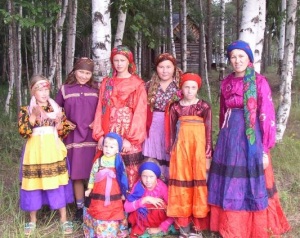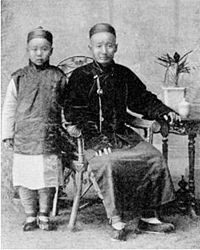
I often run across people asserting that the Finno-Ugrics are “Mongols” or “Asian” or Chinese,”so today’s post is dedicated to the genetic history of the Finno-Urgrics.
The Finno-Ugrics (which includes the Udmurts but not the Uyghurs,) are people who speak Finno-Ugric languages such as the Khanty, Mansi, Hungarians, Maris, Mordvins, Sámi, Estonians, Karelians, Finns, Udmurts and Komis.[1]
Here’s a map:

Here are some pictures:



Edit: I formerly had here pictures of Lennart Meri, President of Estonia, and Linus Torvalds, of Finland, but it turns out they’re actually ethnically Swedish. So I am substituting instead Finish figure skater Kiira Korpi and Estonian soldier Andres Nuiamae (killed in Iraq.) Hopefully they aren’t secretly Swedish.









The Finno-Ugric languages are a subset of the Uralic Language family that excludes the Samoyedic languages.
Language is always a problematic base for claiming ethnic identity, because conquered people can easily learn a new language. African Americans today speak English, even though their ancestors weren’t Anglo-Saxons. Even the English aren’t majority Anglo-Saxon.
However, combining language, genetics, archaeology, and whatever historical records we have may result in a pretty trustworthy picture.
In this case, all of the Finno-Ugric people from within “Europe”–Finns, Estonians, Sami, Hungarians, etc.–all look very much like their neighbors. If you just randomly asked me to guess Torvalds or Meri’s ethnicity, the one thing I would not say is “Mongol.”
The groups that hail from Russia’s Siberia look more like other folks from Siberia.
Here are some genetic profiles (these are closeups of the graph at the top of the page):

With a few isolated exceptions (eg, the Basque,) almost all Europeans have a fairly similar genetic profile reflecting three main ancestral groups. The original “orange” and “blue” tribes have been identified via DNA sequencing of ancient European skeletons; at some point they seem to have merged. The “teal” component looks like it came in when a “blue” tribe migrated east and merged with a “teal” tribe, then came back and conquered the “orange-blue” tribes, resulting in blue-orange-teal tribes. (You can see the ancient skeleton sequences at the far left on the graph at the top of the page.)
A few groups don’t show this pattern–the Basques, for example, who don’t speak an Indo-European language, have very little teal. Based on this and other evidence, “Blue-Teal” tribe is therefore believed to be the original Indo-Europeans.
The Finns, Estonians, Mordovans, and Sami all have the blue, teal, and orange of other European groups and they also share a bit of red that is also found in the Russians. This group (including Russians) also seems to have a bit more blue than the other Europeans. The Sami in particular seem to have a fair amount of this red; they look rather similar to the Chuvash, a Russian ethnic group:

The Hungarians have a tiny bit of red if you look very closely, but this is not much at all; several other groups have similarly tiny smidgeons of red and no claims of Finno-Ugric ancestry. The Wikipedia page on Hungarians also states that, despite the well-documented Magyar invasion around 1100, modern Hungarians appear to be genetically continuous with pre-Magyar Hungarians. Perhaps there were never enough Magyars to have much of an impact besides imparting their language; or they just failed to reproduce and so gradually died out in their new land, leaving their language behind; or the red-DNA contained specific adaptations that help people survive in the arctic, and so have been selected against in warmer Hungary; or perhaps the Magyars themselves never had much of the red-DNA for whatever reasons.
By contrast, various tribes from central Eurasia (the Chuvash may perhaps be included) show quite mixed ancestries:

The Hazara are from Pakistan/Afghanistan; the Uygurs are primarily from the far western end of China; Turkmen and Uzbeks you’re probably familiar with; and the Evens are a Siberian people who live in far eastern Russia.
The Mansi are one of our Finno-Ugric people, with large sections of blue, red, and even a little teal. Based on the photos, I’m not surprised to see essentially a mix of Siberian and typically European DNA. The Wikipedia has this to say about their origins:
“The ancestors of Mansi people populated the areas west of the Urals.[3] Mansi findings have been unearthed in the vicinity of Perm.[3]
In the first millennium BC, they migrated to Western Siberia where they assimilated with the native inhabitants.[3] According to others they are originated from the south Ural steppe and moved into their current location about 500 AD.” (wikiepdia)
The Selkups are a Samoyed people–the Samoyed languages are cousins to the Finno-Ugric languages under the larger family of Uralic Languages.
It looks like the original Finno-Ugric speakers who settled in Finland, Lapland, Estonia, etc., looked like the Mansi or Selkups, this might explain the slightly higher quantities of blue in these groups.
The red DNA reaches its greatest dominance in the Nganasan, a Samoyedic people living in north central Siberia:

An old picture of the Nganasan:

(The Yukagir are from further east in Siberia than the Nganasan (the olive-brown shade is shared with the Eskimo;) the Daur and Oroqen live in inner Mongolia, China; the Henzhen live in northern Manchuria/the region north of there along the Sea of Okhotsk; the Ulchis live just north of them. The Tubalar and Altaian people hail from the meeting point of Russia, China, Mongolia, and Kazakhstan; the Dolgans from north central Siberia; the Yakuts live to their east.)
The red/yellow combination is found throughout most of the “Asian” countries–Japan, China, Korea, Mongolia, etc., but not in Cambodia or Thailand. You can see them on the big chart at the top. The two pure yellow groups, the Ami and Atayal, are indigenous people of Taiwan.
The Red, therefore, is found in large quantities in Siberia/polar peoples. In Asia it mixes with the yellow, with the ration of yellow/red increasing as you go south. Red finds its maximum in far northern Siberia, and yellow in Taiwan. I therefore speculate that the red started in Siberia and worked its way south, while the yellow started somewhere around southern China and moved outwards from there.
The Blue is found in all Europeans but is rare in the Middle East; it appears in small quantities in Central Asia, India, and Siberia. Small quantities could just be the result of thousands of years of people moving around ancient trade routes, but the relatively larger quantities in Siberia seem less likely to be the result of trade.
Teal appears to be found in all Indo-European and Middle Eastern regions; it is even more wide-spread than orange, which never made it to India.
Therefore I suspect that a band of blue and a band of red people merged to form the original Uralic people from which the Finno-Ugrics later split off. (The lack of red in Hungary could be due to the branch which eventually became the Magyars having split off before the red-blue merger, but they lack the extra blue found in Finns, so this seems unlikely. Plus, their language would be quite different from the other Finno-Ugric languages if they had, perhaps similar to the relationship between Anatolian and the other Indo European languages.) More likely, as the original Red/Blue people spread out across Siberia, mostly toward Europe, they were spread thinner and thinner, or mixed with and taught their languages to more and more new until they were only a small percent of the total population, leaving behind only a smidgen of their DNA in Finnland, Estonia, and Hungary.
Here is a map of the distribution of Haplogroup N, which appears to have emerged about 20,000 years ago:

According to Wikipedia, Subtype N-P43 is estimated at 4,000 to 6,000 years old, frequently among the Samoyedic peoples, with a sub-clade common in Finno-Ugric and other Uralic speakers in Europe. Additionally,
“The subclade N-M178 … has higher average frequency in Northern Europe than in Siberia, reaching frequencies of approximately 60% among Finns and approximately 40% among Latvians, Lithuanians & 35% among Estonians (Derenko 2007 and Lappalainen 2008).
“Miroslava Derenko and her colleagues noted that there are two subclusters within this haplogroup, both present in Siberia and Northern Europe, with different histories. The one that they labelled N3a1 first expanded in south Siberia (approximately 10,000 years ago on their calculated by the Zhivotovsky method) and spread into Northern Europe where its age they calculated as around 8,000 years ago.”
Here’s a beautiful map showing the spread of Y Chromosome Haplogroups all over the world:

Since Haplogroup N is found on the Y chromosome, this probably implies armed invasion that resulted in many of the local men dying and the invaders marrying (or raping) the remaining women.
Note that this scenario does not depend on whether the Indo-Europeans or Finno-Ugrics arrived first; it merely describes their relative ratios in the population. We know they arrived after the Indo Europeans in Hungary, for example, but the Sami are considered the indigenous people of Finno-Scandia. Genetically, the Sami have some teal and orange, which the Red-Blue people basically lacked, so they have at least some Indo-European; just eyeballing the graph, it looks like the Sami are a little more than half Indo-European and a little less than half Red-Blue people.
Overall: the Finno-Ugrics living in Europe proper are genetically closest to other Europeans; their Siberian component is quite small. The Sami are the one exception, with a larger chunk of Siberian DNA, but they are still mostly European.
The Finno-Ugrics who live within the heart of Russian Siberia, however, appear to have quite a bit more Siberian DNA, some European, but not Indo-European DNA.



































